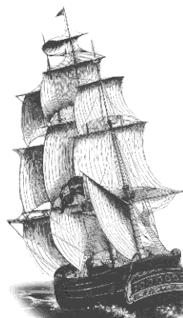Question: What types of banknotes should I collect?
Answer: Many collectors choose to collect one note from as many countries as possible, while others may choose to specialize in a particular country or region. You could even collect a particular theme or topic, such as banknotes with ships, trains, birds fishes, boats or even nudes depicted. More advanced collectors start collecting error notes, misprints, notes with funny serial numbers such as: 111111 or 000001.
 |
|
Question: I have a banknote (or a paper money collection) that I can not identify, because it is printed in a language that I don't understand and the letters on the note(s) seem to be different from latin or some kind of strange characters or hyeroglyphs. How can I find out it's(their) value and possibly to sell them?
Answer: You have to describe the banknote(s) in DETAIL, every detail is important and you have to scan it's/their image in JPEG (.jpg) format in order to show the banknote(s) to us (or send a xerox copy or an original by mail to us). To do that the following page will help you: Banknote Appraisals (Evaluation). Also: Offers. |
Question: I have a Five Dollar/Mark/Franc (etc.) banknote dated 1900 (example), what's the value of it? Are you interested in buying it?
Answer: That is the kind of inquiry that needs much more detail in order for me to respond to it. Please read the above (previous) answer and go to: Appraisals and/or Offers.
Question: I'm at this page now: http://www.banknotes.com/fr.htm (example) and I'm interested in buying some of these banknotes, but I do not see any price listed on there. Are these items for sale?
Answer: You are actually at our Photo Gallery (Currency Museum). Any items displayed on our Gallery/Museum pages are not for sale. To view what we have for sale please go to our Text Pricelist or to our Store (shopping cart). Simple rule: if there is no price displayed - the item is not for sale or it has been sold (out).
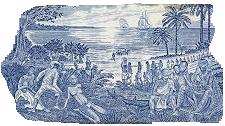 |
|
Question: Are these real money or reproductions that you're selling?
Answer: All the banknotes (paper and plastic currency) on this web site are genuine real currency and genuine real collectible banknotes (not reproductions) unless noted otherwise. |
Question: What is my banknote worth?
Answer: Please visit: Banknote Appraisals. I am unable to give answers via email or via telephone. You'll have to pay to get your bank note appraised. That way I'll make sure I don't get flooded with too many requests for free appraisals, since I have a lot of other work to do to provide you all with more and more beautiful images and exhausting information on many thousands of fantastic banknotes from all over the world.
Question: I don't need an appraisal, but I'd like to know whether the banknote(s) I own has/have any value (no proper form submitted).
Answer: The fact that you are asking this question means that the stuff you have in your possession is valuable to you; otherwise you would have thrown it into a rubbish bin. You can either keep it or give it away. Never throw anything into the trash unless you are going to recycle it. Any banknotes you have, always will have some value, be it $0.05, $1, $10, $100 more or less. So, if you are not willing to spend time and effort and present your holding properly, so we can have enough information to be able to give you our estimate, then there is no need to contact us.
Question: What books could you suggest for a beginning and/or advanced collector of world banknotes?
Answer: Please click on the following link to view and buy most popular books for a beginning and/or advanced collector: Book Nook
Question: How do I grade paper money?
Answer: Grading information is located at the following page: Grading
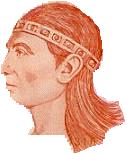 |
|
Question: What are Replacement Notes?
Answer: They are notes issued to replace damaged notes. The usually have a star, asterisk or special prefix in the serial number to indicate that they are replacements. Due to their scarcity, they can command a significant premium over the regular issued note. |
Question: What's a Specimen Note?
Answer: It is a sample note, usually with a special serial number (usually all-zero serial number such as 000000) and an overprint or perforation with the word "Specimen" in the language of the country of origin. They are usually distributed to banks, treasuries and law enforcement agencies to familiarize them with newly issued currency. They are not intended to be used as actual currency.
Question: What are known reproductions of US colonial, confederate, obsolete and other paper currency?
Answer: Paper money reproductions are also known as BOGUS, FAKE, COUNTERFEIT banknotes. Here are two internet pages listing some of most well known repros (USA only). These links will lead you away from my site so don't forget to bookmark this page or to remember "BANKNOTES.COM":
Known Reproductions: http://www.ronscurrency.com/rcbogus.htm
Question: What is Seigniorage?
Answer: Seigniorage is the difference between the face value of the currency note or coin and the cost of printing or minting.
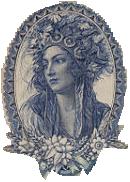 |
|
Question: I have discovered a lot of paper money on my grandmother's attic. They seem valuable to me, but I know nothing about them. Where can I get them appraised?
Answer: To appraise your paper money please go to the following page: Banknote Appraisals. |
Question: What are the names of the famous people depicted on various denominations of U.S. paper money?
Answer: 1 dollar note depicts George Washington;
2 dollar note depicts Thomas Jefferson;
5 dollar note depicts Abraham Lincoln;
10 dollar note depicts Alexander Hamilton;
20 dollar note depicts Andrew Jackson;
50 dollar note depicts Ulysses S. Grant;
100 dollar note depicts Benjamin Franklin;
500 dollar note depicts William McKinley;
1000 dollar note depicts Grover Cleveland;
5000 dollar note depicts James Madison;
10000 dollar note depicts Salmon P. Chase;
100000 dollar note depicts Woodrow Wilson.
Question: Is there an international banknote collector's club or society that I could join?
Answer: Yes, please visit the following page: IBNS.
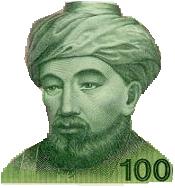 |
|
Question: What is intaglio printing?
Answer: Printing plates are covered with ink and then the surface of each plate is wiped clean which allows the ink to remain in the design and letter grooves of the plates. Each sheet is then forced, under extremely heavy pressure (estimated at 20 tons), into the finely recessed lines of the printing plate to pick up the ink. The printing impression is three dimensional in effect and requires the combined handwork of highly skilled artists, steel engravers, and plate printers. The surface feels slightly raised. This process is called intaglio printing. |
Question: How can I start my own collection of world banknotes from a scratch and at a low cost without spending many days and weeks collecting one banknote at a time?
Answer: Please consider purchasing a "beginner set" on the following page: Beginning Collector Sets. Info: The IBNS Introduction to Banknote Collecting.
Question: What are the guidelines for sending you a banknote offer?
Answer: Please click here to view detailed info on how to offer bank notes to us.
Question: What are the dates of the end of redemption periods for majour European currencies?
Answer: End of redemption periods *
* last day of redemption at national central banks (DD-MM-YYYY)
** formerly unlimited
Question: How do I clean a bank note?
Answer: Cleaning, washing or pressing paper money is generally harmful and reduces both the grade and the value of a note. At the very least, a washed or pressed note may lose its original sheen and its surface may become lifeless and dull. The defects a note had, such as folds and creases, may not necessarily be completely eliminated and their telltale marks can be detected under a good light. Carelessly washed notes may have white streaks where the folds or creases were (or still are). Processing of a note which started out as Extremely Fine will reduce it at least one full grade. Glue, tape, or pencil marks may sometimes be successfully removed. While such removal will have a cleaned surface, it will improve the overall appearance of the note without concealing any of its defects. Under such circumstances, the grade of the note may also be improved. One should not iron a bank note to remove creases and folds. The heat can cause the colour of the note to change or flow and thereby destroy patterns. Folds and creases are part of life of a bank note and should therefore be accepted as such. Any kind of tape should not be used in repairing a banknote. Chemicals that are used on the tape can damage the banknote and its grade will be severely reduced or even make it worthless. Ink and stains can sometimes be removed by using soap, water or alcohol. The treated banknote has to be be washed with clean water after any treatment. Afterwards it should be dried, which can be done by pressing it between paper sheets (in a book). Now when it comes to professional bank note cleaning and improving techniques we are not a good advisor to you since we do not clean, wash, press or improve any banknotes in any way other than straightening bent corners and folds with a finger and naturally "pressing" the notes in holders while they are stored in a stock box.
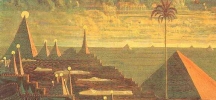 |
|
Although we do occasionally sell some banknotes that have been already improved (washed, cleaned, pressed, glued, restored etc.) by someone else. Only experts, called paper conservators, should repair paper money. |
Question: We need certain banknote scans at a high resolution (300 dpi) for our upcoming publication. What's the procedure?
Answer: Please email us a list of codes (example: AF-70) of the banknotes from our A-to-Z Pricelist (not from gallery!) including the time frame you need it done by and I will get back to you. Please note that we charge you for our time and labour spent scanning the images. We do not sell the images, we charge for our time and the intangible service you receive. Total cost of scanning and providing the images on a server depends on many factors. Alternatively, in exchange to our time/labour you are welcome to give us a credit by providing a credit to "Banknotes.com" in your book, publication or as a link on your website. Please note that our digital images/scans are our property, but the physical banknotes depicted on Banknotes.com are not necessarily our property (especially some of the images in our Gallery-Museum that have been sold or traded with other collectors).
Question: Why most banknotes bear signatures on them?
Answer: In the past, many countries required that all issued banknotes be hand-signed by at least one authorised person. This requirement was in force even before banknotes were invented. When an obligatory document was created (as equivalent of paper money), which specified certain financial obligations between the parties, it allowed the transfer of the financial obligatory document (which was signed and sometimes sealed) to a third party. Thus, the obligation became legally binding.
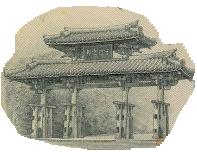 |
|
Question: What is your telephone or fax (facsimile) number?
Answer: Currently we do 100% of our correspondence and support via email. Once you place your order on our online shop (store, shopping cart or basket) you will be provided our telephone and a fascimile number. You can also request our tel/fax number via email. Please note that our telephone and fax is on the same line (number) and in order to send us a fax (facsimile) you will have to phone (call) us first or simply send your fax after the autoresponder (voice mail) message is finished. Please note that our telephone line is only for order-related questions and if you wish to talk to me personally, please email me first to arrange a phone conversation. Please do not call too early or to late. Best time to phone us is between 10:00 (AM) and 21:00 (9:00 PM) GMT. |
Question: Can you appraise (evaluate; tell me the value) of a single banknote or coin or a collection of mine over the telephone or fax?
Answer: The answer is - definitely not. Please go to "Banknote Appraisals" (we do not appraise coins) page to get your item(s) appraised.
Question: Do you buy world banknotes? Can I sell to you?
Answer: Yes, we do buy all kinds of world banknotes (paper and plastic currency). Please click here to view detailed info on how to offer bank notes to us.
Question: Do you buy or sell slabbed, professionally graded and certified banknotes?
Answer: We do purchase an occasional slabbed, graded and certified banknote, but we try to not to indulge in what we consider imperfect and even lacking grading scale that is better fit for coin grading. Sheldon grading scale does not even mention the word "tears" in it's grades 25 and below down to 10 inclusively. Only in the grade 8 the word "tears" surfaces. That is just plain wrong. We use the IBNS grading for banknotes and will continue to do so. Another reason being often inaccurate and careless services that slab (encapsulate in thin plastic envelope, that with time may leak chemicals into the banknote) banknotes that add a multifold (we sell it for $8) and unnecessary cost to the price of the collectible banknote artificially inflating (we sell it for $6) its value with severe consequences to banknote collectors and the hobby in general. In order to verify the accuracy of a slabbed grading a collector would have to open the slab (capsule or a thin plastic envelope), which would break the seal of trust. All collectors and dealers should learn how to grade yourselves, which is not so difficult to achieve. We grade our banknotes carefully and accurately and upon request your ordered banknotes can be graded in your desired (different than IBNS) system and method and even slabbed if desired (at an additional cost).
Example of a severe misidentification by PMG: Click here to view. This is a Pick catalogue Nº 30 and not P-26. While P-26 is many times more valuable than P-30. There were other blunders reported on this item alone, but reportedly were corrected by PMG, yet they still failed to address the most important issue - the catalogue number misidentification. We have some more such blunder examples available or they can be viewed in online numismatic forums. Here are just a few more:
Click here to view - Choice Uncirculated? (about About Uncirculated (aAU) at best)
Click here to view - About Uncirculated? (VG-F pressed to aXF at best with repaired bad splits)
Click here to view - Jeneral? (Spelling issues...)
Click here to view - 200 Dirhams turned into 500 Dirhams...
Click here to view - About Uncirculated? (Creased and rounded corners = XF+ max.)
Click here to view - Togo P-46? This is W.A.S. P-2b (without code letter) instead.
Click here to view - Commemorative? Really? (No, it is not)
Click here to view - About Uncirculated? More like XF with edge splits (at most).
Click here to view - £1 banknote identified by PMG as a £10 note.
Click here to view - This banknote is not a Specimen but PMG identifies it as such.
Click here to view - This banknote is not a Specimen but a Pick # 10b Colour Trial.
Click here to view - This is not P-13a 1 Ringgit note, but a P-14a 5 Ringgit note.
Click here to view - This Chinese forgery is certified by PMG as genuine.
Click here to view - The word "DOLALRS" is misspelled.
Click here to view - Wrong "70th Anniversary of RMB Issuance" header label used.
Click here to view - This Zero Euro souvenir note is taken too seriously by PMG.
Click here to view - Absolutely no comment on this multi whammy blunder!
Click here to view - Grossly overgraded by PMG. IBNS 'Good' or PMG G/VG 6 or 8.
Click here to view - Governor signature is Luigi Einaudi and not Azzolini and the date 1943-44 is wrong. Additionally, it is Pick # 72c and not P-72a as the unprofessional PMG grader claims.
Click here to view - Novelty (fantasy) money-like print in a size of an old Chinese banknote that one could mistake for genuine currency of a bygone era professionally graded, certified and slabbed by PMG.
Click here to view - Misidentified by PMG and "confirmed" by auction "expert". Bulgaria in 2025 is not even in the Eurozone yet. This banknote may have been printed by Oberthur in Bulgaria (F) but the serial number prefix indicates it is assigned to Malta (F). According to this logic all world banknotes printed by ABNC in the USA should be assigned to the United States?
It means that attribution mistakes that haven't been corrected for years are repeated in PMG grading attributions. Some more examples can be found on the IBNS forums (members only).
Question: I did not find an answer to my question in the Q&A above and my question is not order-related. What should I do?
Answer: Please email us (no phonecalls, please) and I will try to do my best to answer your question(s). I reserve the right not to respond to questions the answer to which can easily be found by browsing my web site. Please also check our Help section. The fastest way to get a reply to your question is to include it in your order's "Customer Notes" section.
|

